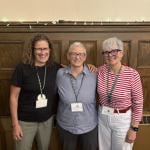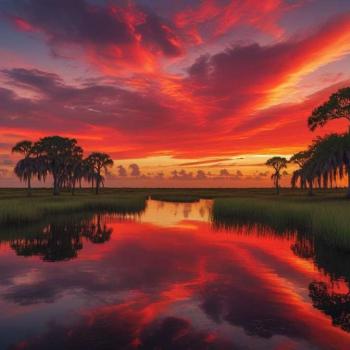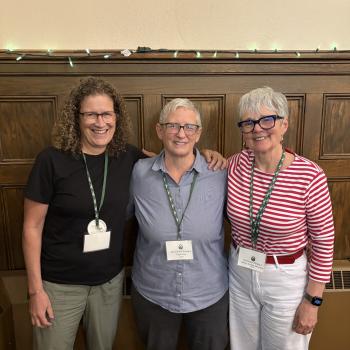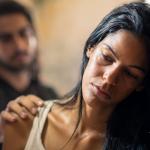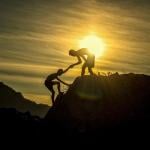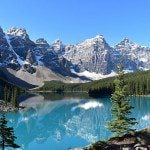On the first morning of my overseas travel, I went for a run in Phnom Penh, Cambodia. A large city park one block from our hotel provided the perfect venue for a very hot, very humid effort, even at 6 a.m. The park was crowded with locals: people running and walking; elderly folks doing Tai Chi; middle-aged women dancing Zumba; Buddhist monks headed to a nearby temple; people buying fresh produce at small stalls set up street side.
Even though the heat slayed me, I couldn’t stop smiling, feeling deep gratitude for the extraordinary opportunity to do something ordinary among so many strangers. That early morning run set my course for the entire three-week trip through Cambodia and Thailand, as I was persistently reminded that millions of others go about their daily lives as I go about mine, following routines as deeply entrenched and banal and beautiful as those I follow here in Oregon, different only by degree (in temperature and otherwise).
So this is what I learned running in Phnom Penh, and then traveling with fifteen young adults and one fellow professor through Southeast Asia: Turns out, I’m not the center of the universe. Nor is the university where I work, or Newberg, Oregon, or the United States for that matter.
Shocking, I know.
Finding Perspective in Overseas Travel
I imagine one objective of my university’s study abroad program is the kind of perspective-shifting that can accompany international travel. It’s hard to remain unchanged by encounters with other cultures and other people, and a university education intends to be transformational. This is true not only for students, but for faculty leaders, and I’m grateful that the university where I work has supported an international travel program for almost 40 years now, providing significant resources so that students and faculty members can see the world, and learn more definitively about their place in it.
I also recognize the significant privilege I have of being part of this program, with the time and good health that makes these trips possible. And while I could write about how each day’s experiences proved transformation, let me focus on two:
Seeing the sun rise over Angkor Wat: Our tour guide arranged for us to witness a sunrise over Angkor Wat, considered the “eighth wonder of the world” and the world’s largest religious monument, covering 400 acres. Built in the 12th century, it was originally a Hindu tribute to Vishnu before becoming a Buddhist site containing multiple temples.
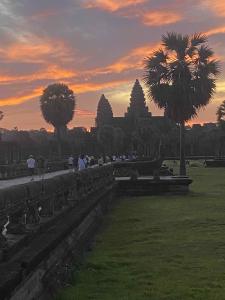
After watching the beautiful sunrise, our guide led us through the main temple, talking about its intricate architecture, the extraordinary efforts by humans and elephants to build the stone structures, and the storytelling memorialized in bas-relief carvings and sculptures.
The marvel of Angkor Wat was humbling for a 21st-century mindset that believes our advances in engineering, technology, and art are far superior to earlier epochs. The monument affirms that human ingenuity, creativity, resilience, and intellect have remained constant through time, an affirmation of our shared fearful, wonderful creation throughout human history and our ability to co-create with God.

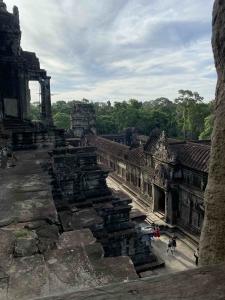
Bearing Witness in the Killing Fields: Our shared humanity extends also to depravity, and our capability to do evil for empire. In the Choeung Ek Genocidal Center near Phnom Penh, we learned more about the reign of Pol Pot, who killed almost a quarter of Cambodia’s population between 1975-1979.
We learned about Pol Pot’s desire to remake Cambodia into an agrarian utopia by killing the country’s intellectuals and religious leaders; ethnic minorities, including Vietnamese people, refugees from a U.S.-backed war; and those who were seen as disloyal to his regime. On our bus ride to the memorial, our guide told his family’s story, and how his parents’ education and their Vietnamese ancestry made them targets; and also how the Khmer Rouge still has significant power in Cambodia, never being fully held accountable for what happened.
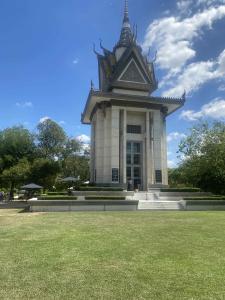
As the guide directed us through the memorial, we stopped at a tree, where babies and children were killed because they were labeled as “CIA,” accused of disloyalty to the regime (and loyalty to the West) by virtue of their parents. To save money on bullets, the babies were smashed against the tree, then buried in a mass grave beneath its branches.
I couldn’t help but think of my children and grandchildren, my entire world, and the horror those parents must have felt, watching their children violently murdered. I also couldn’t help but think the children in Gaza now, dying by bombs and starvation, those innocent lives destroyed by accusations of being “Hamas.”
Later, reflecting on the experience with several students, we talked about some of the eerie parallels to what is happening in the United States now, when leadership is trying to rewrite history, removing references to women and minorities from government websites and defunding programs that are deemed woke; when some people groups are demonized, even exiled to overseas prisons that seem similar to the S-21 prison we visited; when higher education is under attack, and intellectuals are seen as enemies; and when disloyalty to a president is considered a punishable crime.
Finding Hope in Overseas Travel
It doesn’t have to be this way, though, and I’m idealistic enough to think that encountering other people, and other cultures, can be one antidote to the excesses of power, a potent reminder that we are all fundamentally human, image-bearers of a remarkable creator who loves us equally, a notion countering the ideology of empire.
My students, creative and compassionate and kind and curious, fueled my idealism. Over and over, I was inspired by them and their willingness to make connections with others, despite significant language and cultural barriers. Whether we were walking through a Buddhist temple, or learning to cook Thai cuisine, or having dessert at the home of our guide, the students modeled a kind of open-hearted wonder that might change the world, were far more people—including our religious and governmental leaders—to assume a similar posture.
On the last night, we took a dinner cruise on Bangkok’s Chao Phraya River. The night was temperate (by Thailand standards), and my co-leader and I enjoyed city views from the large boat’s upper deck. Down below, we could hear a cover band playing western hits, and when we realized the students had abandoned seats near us, we thought they’d probably retreated to the dance floor. Eventually, we found them there, intermingled with tourists from around the world, young and old, laughing and dancing together.
Even though I’m not a dancer, their joy drew me in. High on Mango Sticky Rice and familiar music sung by unfamiliar voices, we celebrated our shared humanity. Our fearful, wonderful creation. Our beautiful world, made small for one brief moment.




